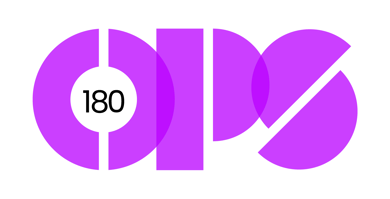HOW TO DESIGN SEGMENTATION TO UNITE PEOPLE AND PERSPECTIVES
Discover what ways of looking at the markets drive most value and help prioritize and scale for growth
Inspiring and empowering with shared perspective, unity and direction, answers and timely advice
Here is a Webinar and more detailed article on "Why AI + ML + Strategic Segmentation = Productivity"
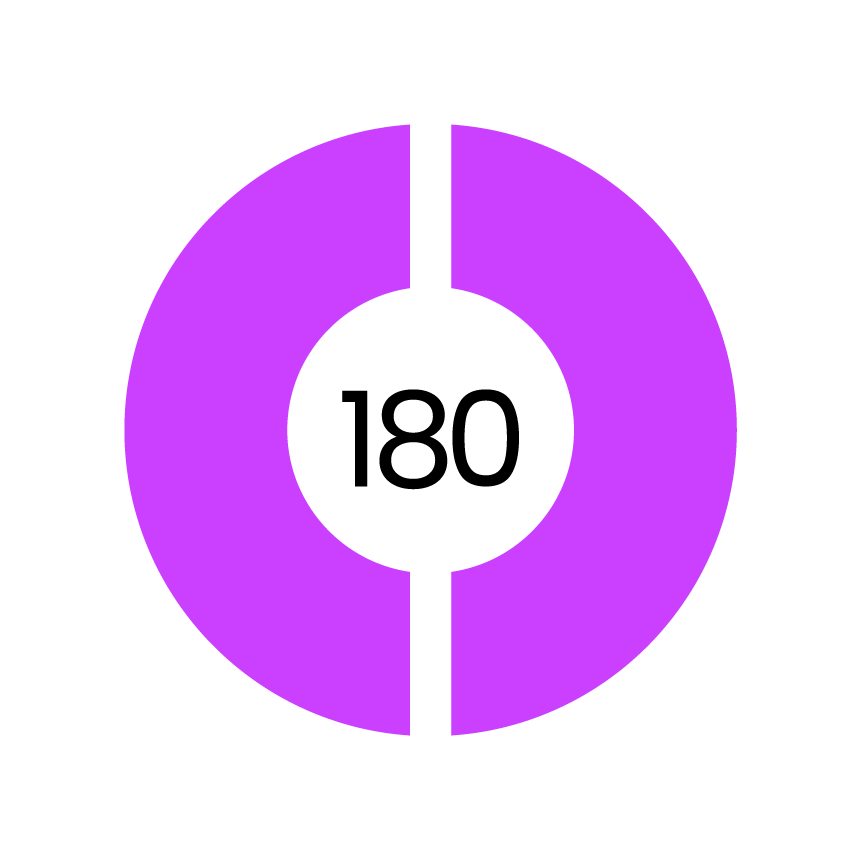
Typical reasons for challenges
Stop and think where the root cause of your challenges are. Eg:
- It is unclear what "Good looks like". Need support and data to define what works in segmentation
- Segments are too abstract, little value in use
- Segments can not be connected with customers - impossible to measure
- Too many approaches to segmentation - no clarity
- The data we have doesn't give enough direction and answers
It is good to keep in mind that there is no single way of segmenting customers in a way that a single approach would answer all questions. However, there must be one primary way for commercial strategy and others to support and steer activities
How can we help?
Start with industry classification
Different business sectors and industries represent very different types of potential and opportunities. In some industries you can serve customers with large variety of services, and in others with just one or two. Defining where the growth is available and accessible is an imperative segmenting tool and help you allocate resources as well as budget bottom-up. This analysis gives you broad view towards question: "Where's the money?"
Industry classification is often too complicated to use as a strategic segmentation tool, there are simply too many classes. However, when we can recognize the use cases and eg. create value chains/business type, it is possible to narrow down to eg. Four strategic segments that are composed of multiple industry classes. This type of aggregation makes the approach both tangible and easy to adopt. Often this type of aggregated approach is the strongest option for strategic segmentation to supplement with other approaches.
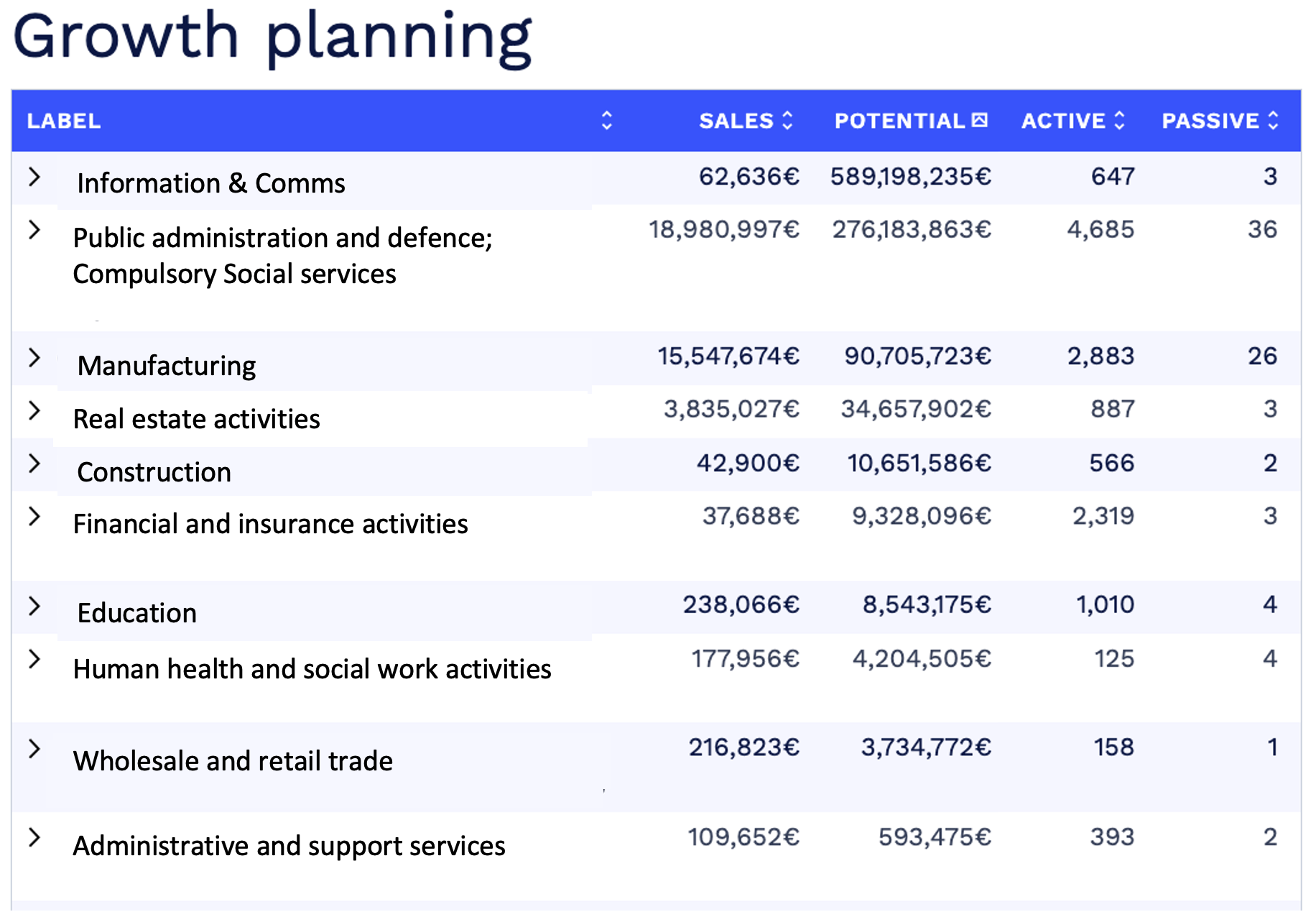
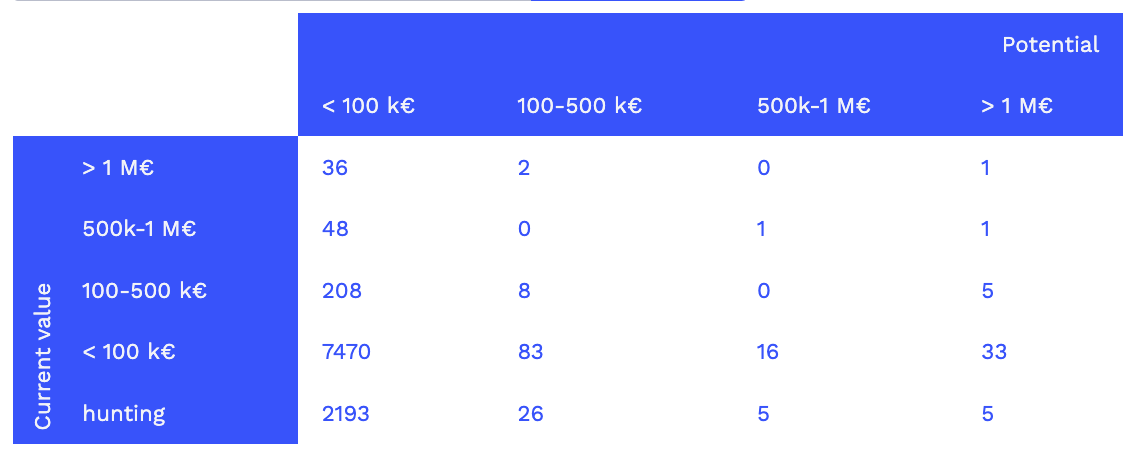
Current + Potential value for resourcing and goals
Our standard approach is to create a segmentation based on current value (Annual Revenue Per Account = billing/year) and growth potential. This will help you recognize Farming customers, which have no growth potential as well as strategic, Growth and priority new customer acquisition targets. The customer typology is an invaluable source of insights for goal setting and prospects about account development and customer care model resourcing and design. It can be very valuable in defining the roles of agile teams and their work to optimize customer care models and turning potential to sales. Learn more here
Customer Maturity for priorisation
There is also need to rule out some customers that are clearly out of the market, customers we can not help. Simply ruling certain parts of the market out makes priorisation easier. Those on the market can be divided into maturity/activity classes. There will be significant differences in industry types and this approach support that approach by revealing data about speed-to-money. The value of this analysis is strongly dependent on outside-in data and insights
Customers in Addressable market don't have product fit, or they are simply out of our reach. Customers in Obtainable Markets have the product fit, but they are not actively looking for answers. How we catch their attention, get them to pay attention and start considering is a path to growth and market share. This endeavour is very exiting platform for lean development and learning. Active markets represent our existing customer relationships and customers that are looking to make decisions right now.
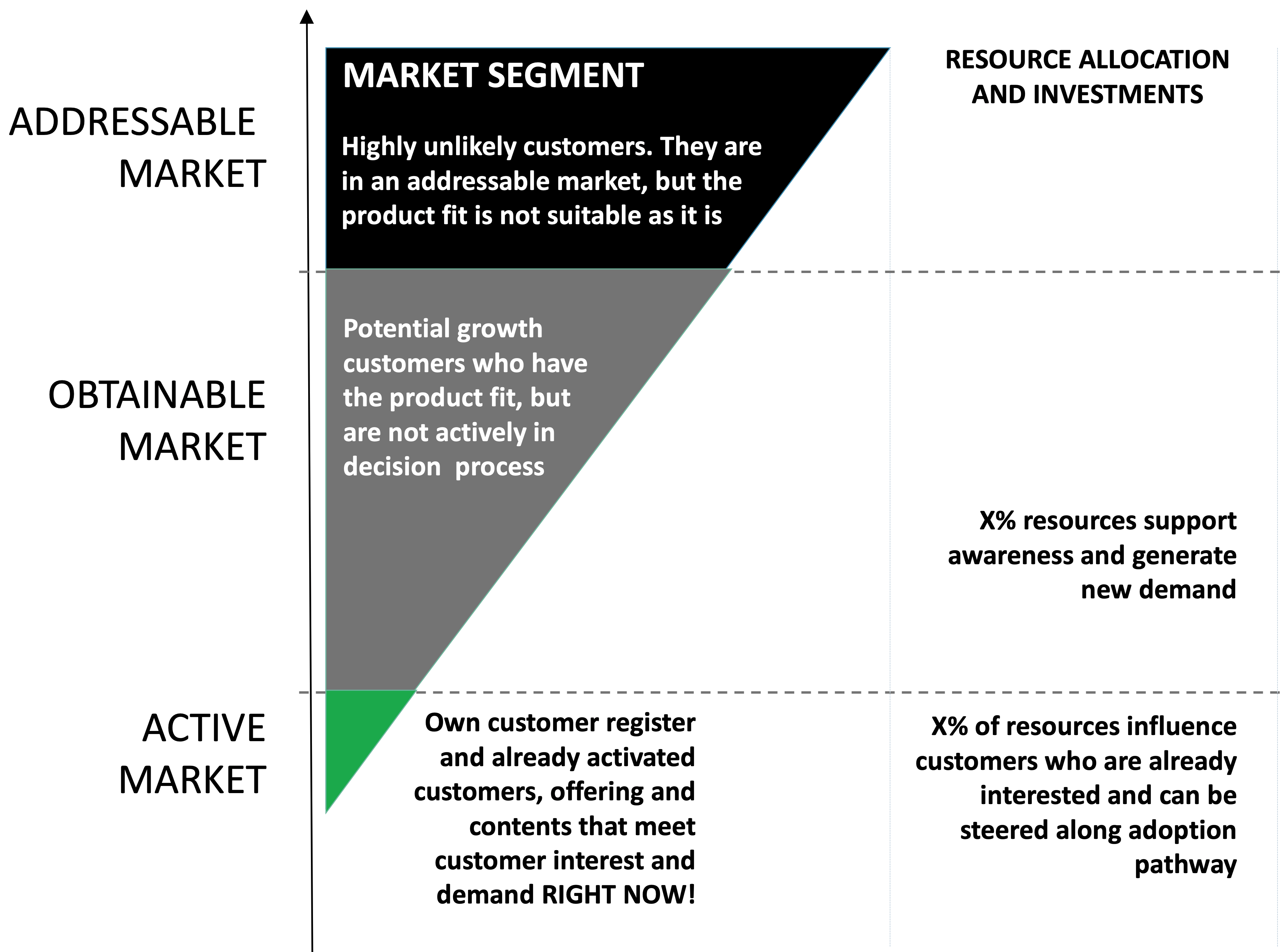
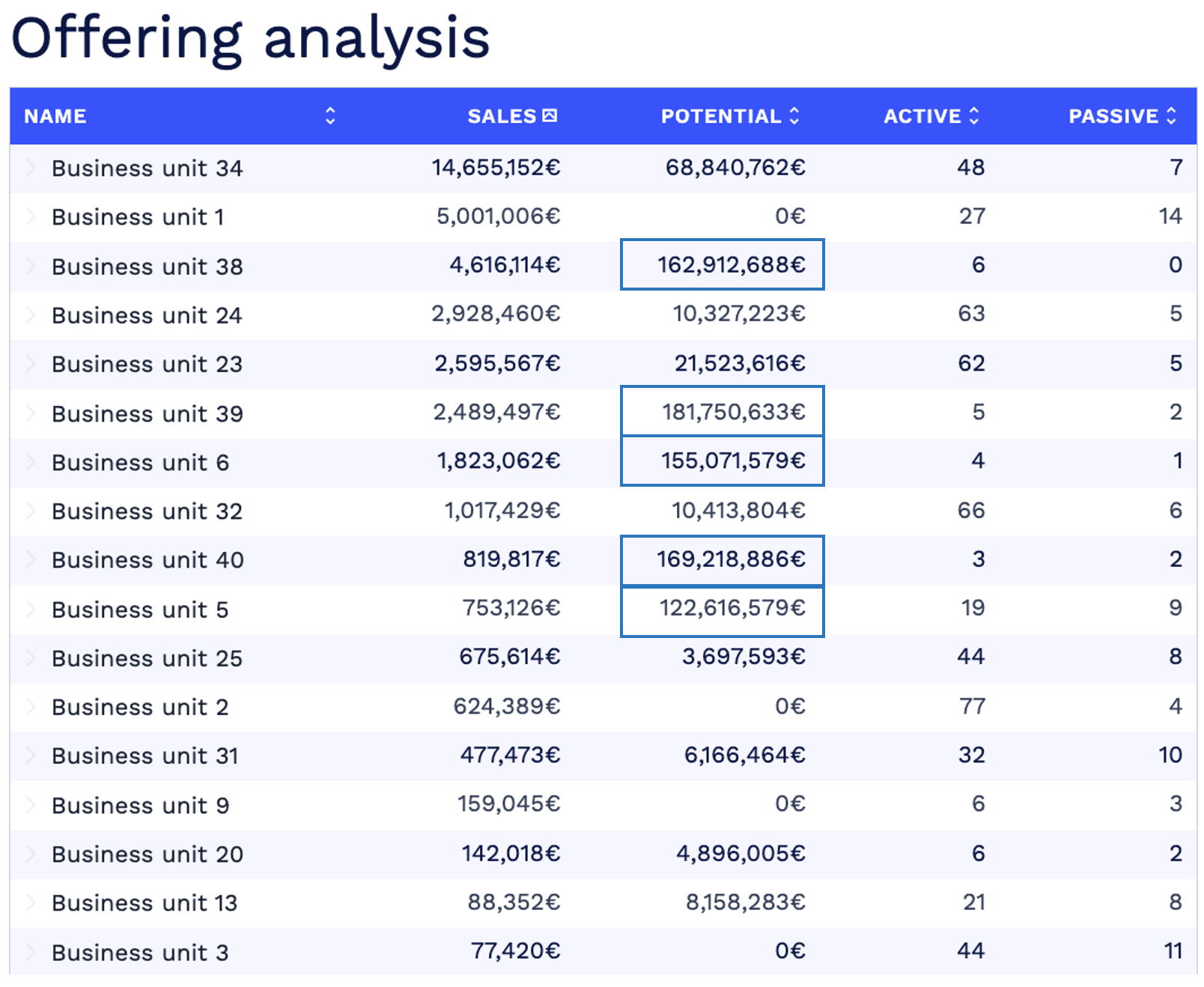
Need based segmentation
This approach will take further the industry classification related starting point and help recognize use-cases and value which help us define how we can serve these customers.
When companies have grown organically and with M&A they have also developed new offerings and offerings may have very different position in their offering life cycle. Some might work on saturated and declining markets and others in growth markets. This is a fertile ground for analyzing what we can find from organic phenomena and customer needs.
When we are analyzing history with time series analysis and aggregating potential by offering, we are likely to discover offerings that have been in the sidelines of strategy, but hold very tempting prospects. By segmenting customers, we will be able to recognize growth potential in existing offerings but in context that have not been considered as strategic.
Need based segmentation is a tool for discovery for use cases and growth potential. These use cases and strategic segments offer great platform for creation of objectives and defining Key Results to go after. This type of data also gives very clear advice for activity and value proposition development, Customer Journey Design and Customer Lifecycle planning. It builds a shared platform for offering, marketing, customer facing organization and management.
How are we succeeding with customers - Relationship segments
Customer relationships are in constant change. Some markets are growing and others are declining, some are just emerging. To stay tuned with how these changes influence our customer relationship it is valuable to monitor where we are winning new accounts and have growing accounts. For the risk perspective it is equally important to recognize what kind of customers are declining and passivating.
Measuring change in these segments and learning where to drive growth and where to mitigate risks gives strong tools for priorisation Strategic and operational planning.
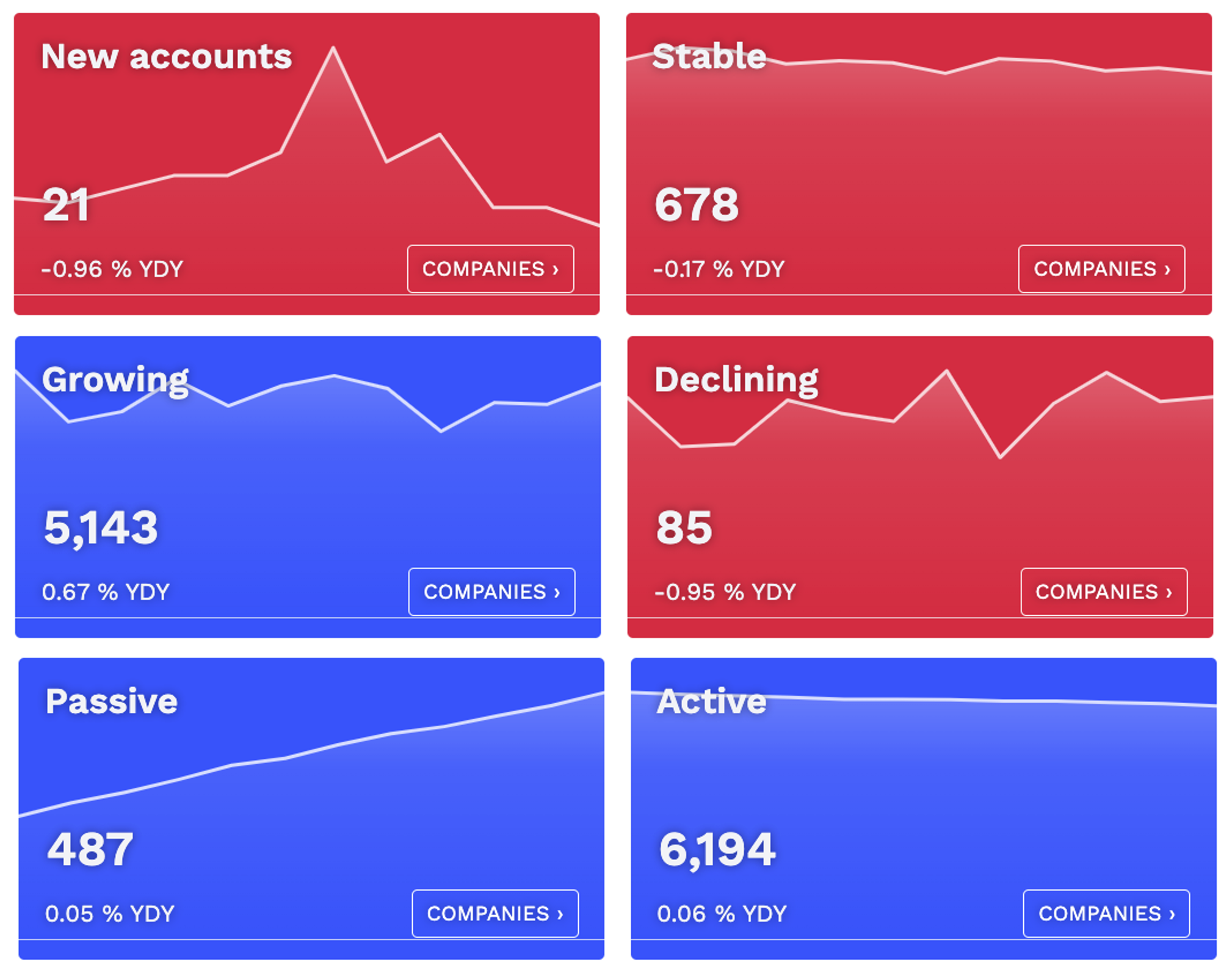
Measure what matters most
Once the segments have been decided on, we offer a tool to measure how we are doing with those segments. Our approach is to concentrate on what is happening with customers and markets, which is an approach that offers shared view and Key Results that unite people, give purpose and empower them. Everything we do, will have an impact on customers and will show in these measures. Having a shared narrative and transparency is a must and with our help, it is easy.
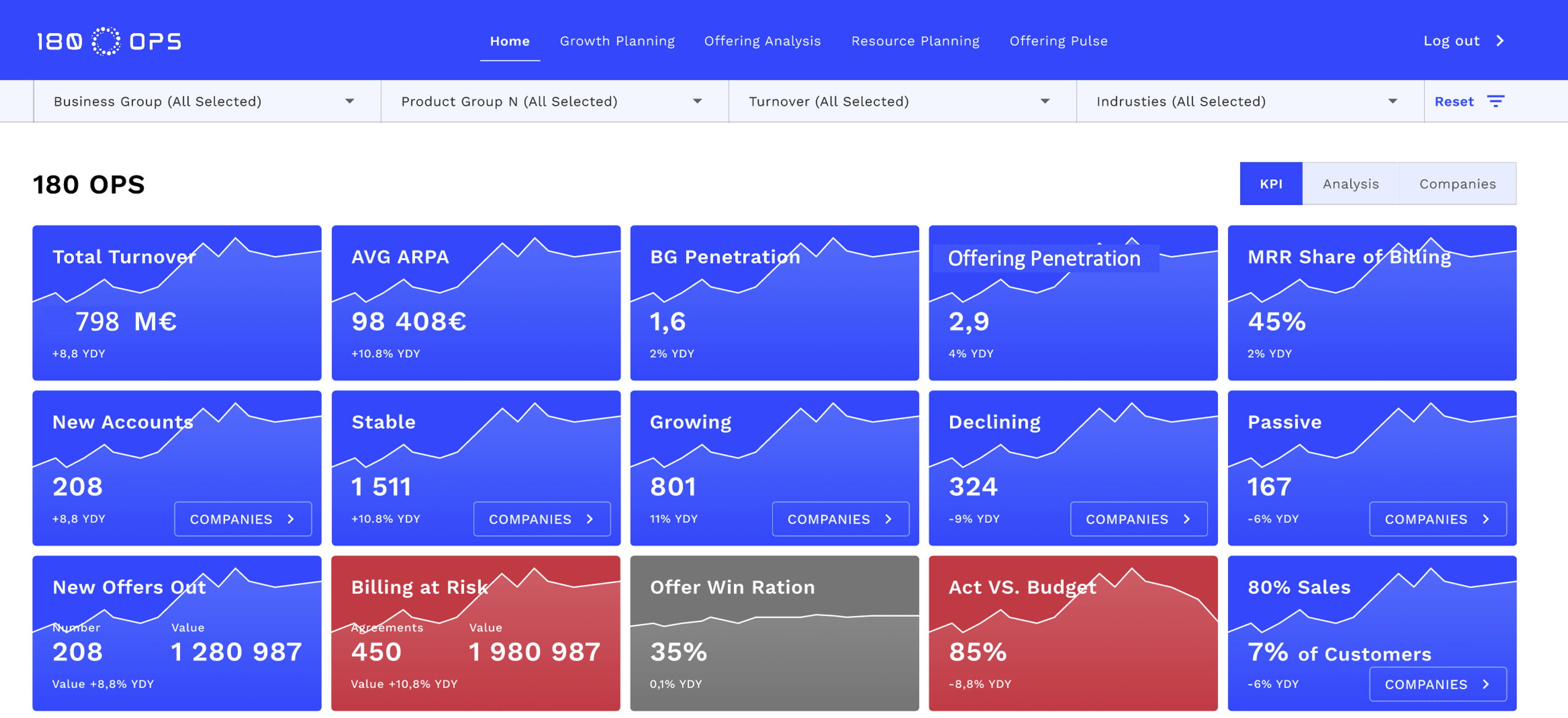
How we can help you succeed?
-
Fast and low effort
Quick start with data dumps. Low datamaturity requirements. Easy to use for sales and Contact Center
-
Critical perspectives
Single tool to define what matters most and how to segment customers for strategic narrative, use-cases, solution development, resourcing, budgeting, and operations
-
Discovery and Answers
Capability to analyze markets by industry segments and by offerings. Readiness and Risk tools help you discover answers to WHY-questions
-
Purpose and Unity
Shared and common tools to collaborate and succeed together. This approach brings people together and unite them with shared perspective and objectives
-
Measure what matters
We all speak one language, money. Everything is analyzed in monetary perspective to steer attention
-
Stay tuned with markets
Markets and customer's situations change. Discover how to make most of those changes. Get timely advice to your next sprint
Book a demo, intro & sparring
Let's have a discussion. We can show you the demo and would love to discuss about your challenges and how we could possibly help you.
